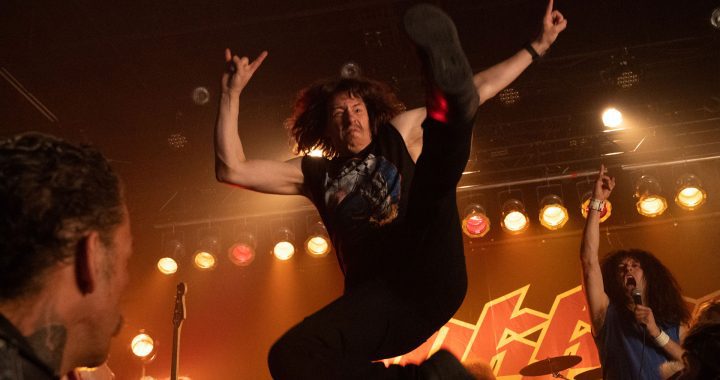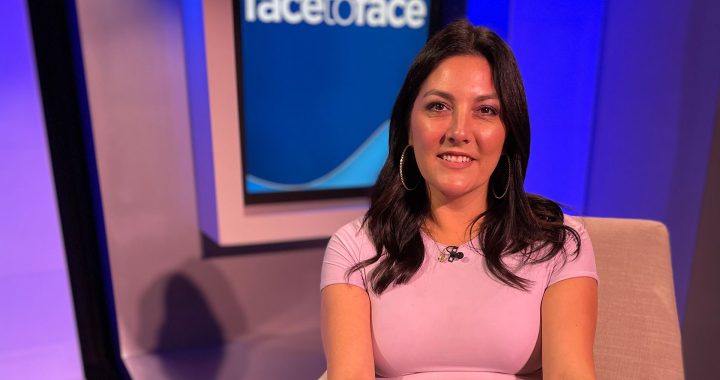Celebrated Mi’gmaw filmmaker, Jeff Barnaby believes the Canadian film industry is making “slow but albeit reluctant” steps towards supporting Indigenous filmmakers.
“It’s a bittersweet industry for me because on one hand it allows me to exist, it gives me real creative freedom with what I’m doing but at the same time, I’d like to see more Native filmmakers get that opportunity,” says Barnaby.
His latest film, Blood Quantum was referred to as an “important step for Native filmmaking” in one glowing review.
“I think you’re going to see a lot more work from Native filmmakers and I think that’s to the Canadian film industry’s credit,” says Barnaby but adds, “the kind of attention we get as Native filmmakers should be reflected in the budgets that we get, to put it bluntly.”

Barnaby says it took 13 years from coming up with the idea and finding the funding to getting Blood Quantum made and out to the masses.
He says he had to make Rhymes For Young Ghouls (2013) in the interim because no one in Canada would front the amount of money needed to make the film, that Barnaby says on paper, should have cost $10 to 15 million.
Once production was under way, three quarters of Blood Quantum was shot before running out of money.
Barnaby had go and find U.S. investors to come on board and save the film at the 11th hour.
In the end, Barnaby says he’s very happy to have his latest film out in the world for all to see.
A theatrical release was initially planned for his zombie thriller but the COVID-19 pandemic forced the movie to be made available via video on demand.
The change has not disappointed the Mi’gmaw filmmaker, who spent more than a decade working on getting the movie released.
“When you’re a marginalized filmmaker and lucky enough to be one of the few Native people to be able to make films, you feel lucky to have a platform and have it out there,” says Barnaby.
Blood Quantum is about the dead who are coming back to life outside the isolated Mi’gmaq reserve of Red Crow. The twist is that the Indigenous inhabitants are immune to the zombie plague.
The film has garnered a positive reaction.
It holds a “certified fresh” ranking on review-aggregation website, Rotten Tomatoes.
Barnaby believes watching the movie in the middle of a pandemic exacerbates a lot of the politics in the film and is one of the reasons the movie has been so successful.
Blood Quantum has images reminiscent of the Oka Crisis and the film is set in 1981 when Barnaby’s home community of Listuguj, Quebec was raided by Quebec Provincial Police over a salmon fishing dispute. The bridge where arrest were made plays a prominent role in the film.
Barnaby wanted to pay homage to legendary filmmaker Alanis Obamsowin, who’s Incident At Restigouche documented the 1981 raid.
“I just wanted to make a film that was more zombie fun and carried that political message,” says Barnaby. “I thought the iconic imagery from a lot of Alanis’s films did that without really having to blatantly point it out in the film because I felt if you did that, you can alienate certain audience members and I really wanted to make a film for Native people but at the same time it wouldn’t be exclusively appreciated by Native people.
“It was so easy to lean into her movies because those images are very iconic and I think they’re part of the cultural zeitgeist of Canada and Canadian cinema. It’s just a nice Easter egg for people who know and I think the great thing about it is because of the popularity of trying to make that kind of popcorn zombie film, people are going and getting to know that film and I think being educated in the process.”
Blood Quantum is Barnaby’s second feature film.
Barnaby not only wrote and directed the two films but also composed the music for both.
Barnaby was enamored with Quentin Tarantino’s movie Pulp Fiction and says George A Romero and Clive Barker are among his other inspirations.
He believes the most interesting stories being told right now are found in comic books.
“I’m really drawing from everything and filtering it through this lens of growing up on reserve, in foster care and the people I experienced growing up there and that’s really where my cinema comes from,” says Barnaby.
“I think to a certain extent there is a real desire for stuff on reserves because you have a lot of big horror fans but no real presence in horror films.”
Barnaby is currently working on a “cosmic horror story” about the end of the world and a young girl that tries to escape the city under quarantine to get back to her reserve.
He has also written a television show that is making the rounds.
“Everybody asks are you going to graduate to bigger films and for whatever reason that always implies that you’re going to stop telling stories about Native people,” he says. “I think the Native persons story is intrinsically linked to the history of the Americas and I think you can’t not tell it and have it not be interesting.
“We see films like Avatar which is basically the retelling of colonization but in space with sexy blue cats, I think it gives you the idea for the potential of not only exposing the culture, exposing the message but the amount of money you can make.”












